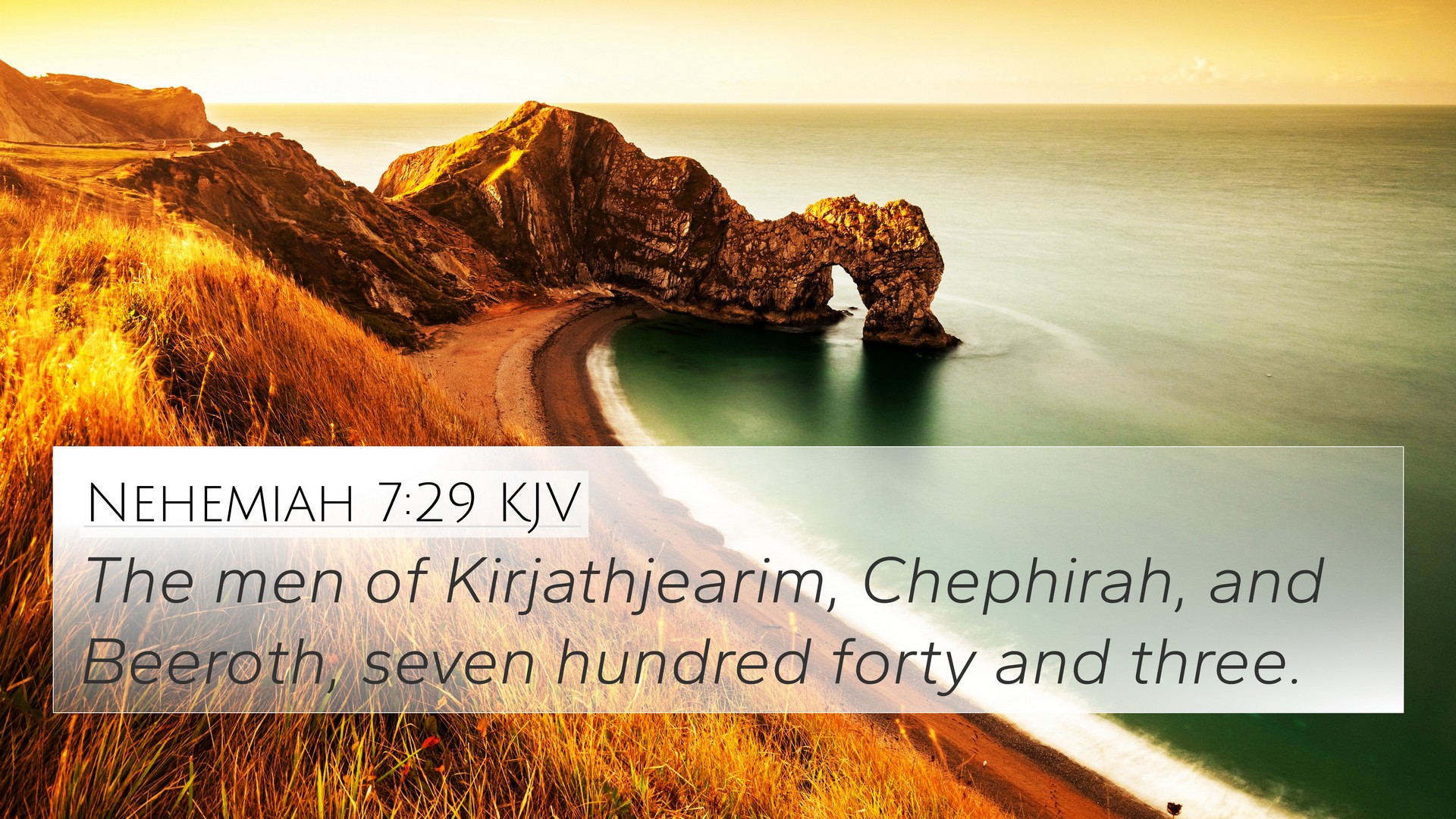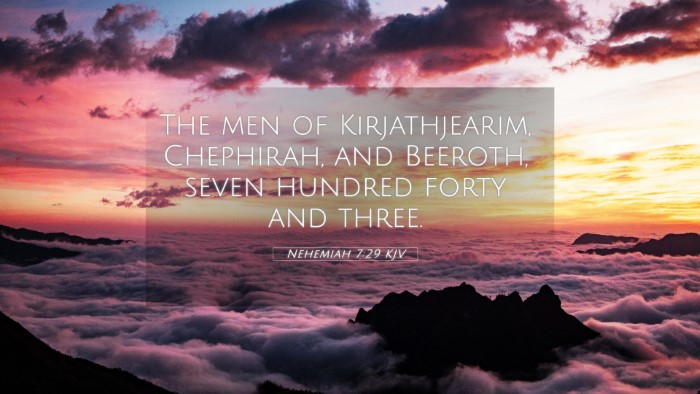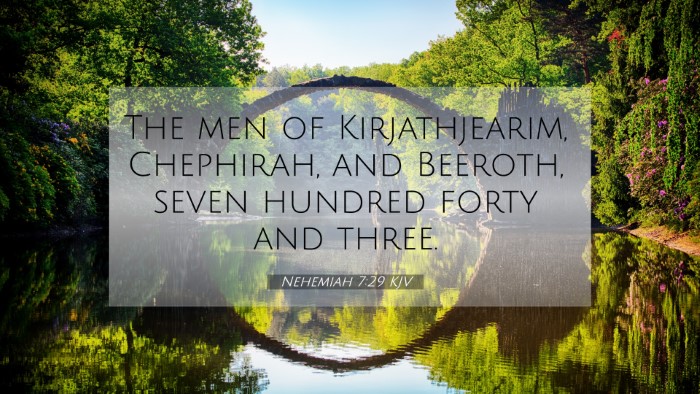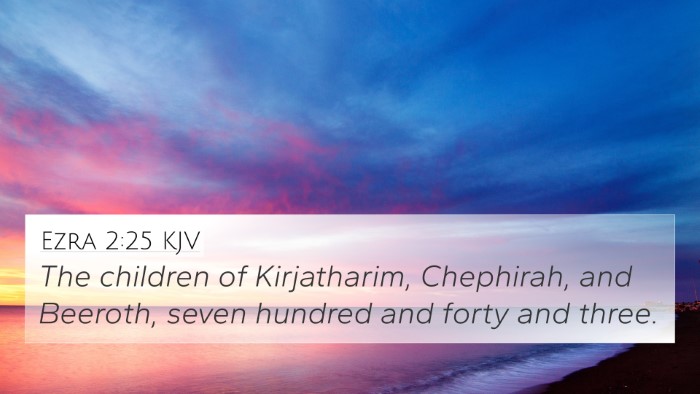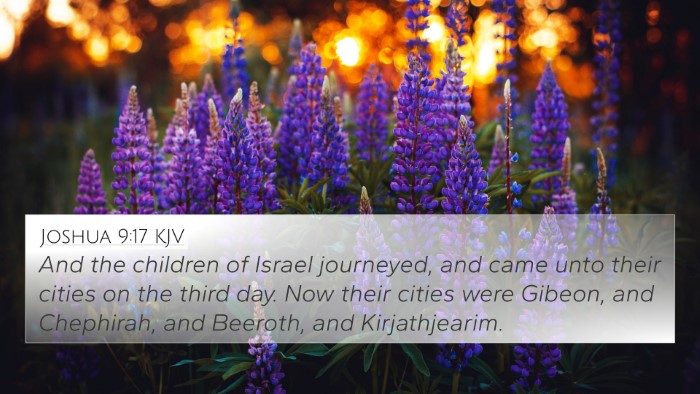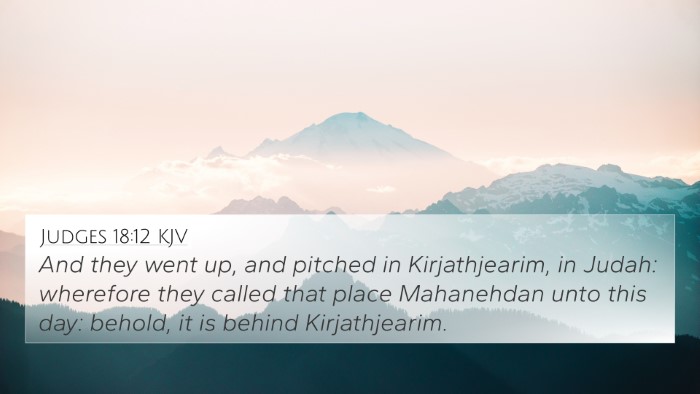Understanding Nehemiah 7:29
Nehemiah 7:29 states: "The men of Bethlehem and Netophah, an hundred fourscore and eight." This verse is a part of a list that serves to document those who returned from exile in Babylon to Jerusalem. This passage reflects the restoration and re-establishment of the Jewish community after a long period of displacement.
Verse Summary
This verse specifically identifies the group from Bethlehem and Netophah, emphasizing the idea of community and belonging in the returned exiles' new life. This is further enhanced by interpreting the significance of these towns in the context of Jewish history and their biblical relevance.
Insights from Commentaries
Matthew Henry's Commentary:
-
Henry highlights the importance of naming the families and communities that returned, emphasizing the value of restoration not only of land but of familial and community ties.
-
He notes that these names are significant for future generations to remember their heritage, fostering a sense of identity and continuity.
-
The mention of "an hundred fourscore and eight" may also reflect God's faithfulness in preserving a remnant of His people.
Albert Barnes' Notes:
-
Barnes discusses the typological significance of Bethlehem, the birthplace of David and later of Christ. This creates a prophetic connection to the messianic lineage.
-
He emphasizes that records of these names serve as a historical reminder of God's promise to His people and His willingness to restore them.
-
The account points toward the larger theme of God’s deliverance and restoration throughout history.
Adam Clarke's Commentary:
-
Clarke notes the detailed record of numbers and names illustrates the importance of organization and worship in rebuilding the community's social and spiritual structure.
-
He also reflects on the connectedness of the Jewish people through these genealogies and the spiritual leadership rooted in their history.
-
The process of returning serves not just to restore physically but to revive their covenant relationship with God.
Cross-References and Thematic Connections
Nehemiah 7:29 interweaves with various themes and other scripture references, reinforcing the overarching narratives of restoration, community, and prophetic fulfillment. The following verses illustrate contextual connections:
- Ruth 1:19-22 - The acknowledgment of Bethlehem as a significant cultural and spiritual place.
- Micah 5:2 - The prophecy of the birthplace of a ruler in Israel, linking Bethlehem directly to messianic expectations.
- Matthew 2:1 - The reference to Jesus' birth in Bethlehem enhances the understanding of Nehemiah's emphasis on this town.
- Ezra 2:21 - A parallel record of the return from exile, maintaining continuity in the genealogy and community restoration.
- Jeremiah 31:27 - The theme of the restoration of Israel's families underlines the significance of the verses in Nehemiah.
- Psalm 137:4 - Reflects the longing for Zion, highlighting the importance of returning to their homeland.
- Zechariah 8:28 - A prophetic promise of the return and rebuilding emphasizes hope for the exiled communities.
- 1 Chronicles 2:54 - Further documentation of the houses of Bethlehem, showing the rich spiritual importance of these names.
- Nehemiah 11:25 - A later mention of those who settled in the towns reinforces the rebuilding efforts of the community.
- Acts 7:15 - The mention of Israel’s history in the New Testament ties back to the themes present in Nehemiah.
Thematic Bible Verse Connections
Throughout Scripture, the themes of community, restoration, and identity resonate. Nehemiah 7:29 encapsulates these, helping believers understand the importance of their heritage. From references in the Old Testament prophets to the New Testament Gospel narratives, connections between Bible verses deepen the understanding of God’s purpose and plan through history.
Tools for Bible Cross-Referencing
Understanding verses through tools for Bible cross-referencing can enrich one's study. Useful tools include:
- Bible concordances
- Cross-reference Bible study guides
- Bible reference resources for thematic connections
- Bible chain references linking key ideas throughout Scripture
Conclusion
In conclusion, Nehemiah 7:29 serves as a poignant reminder of God's faithfulness to His people through history. By exploring the comments from respected theologians and understanding the cross-references associated with this verse, believers can deepen their understanding of Scripture, enriching both personal study and communal faith experiences.
